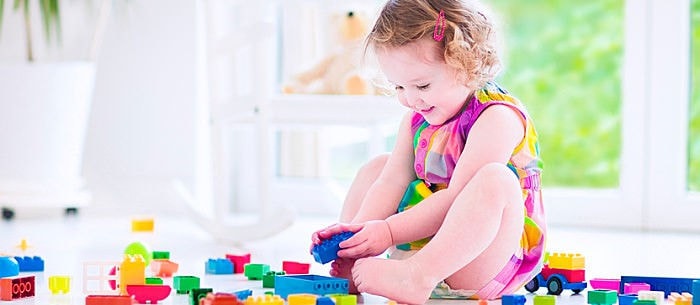Watching your little one learn new concepts and develop new skills can be some of the most cherished and exciting parts of being a parent. And one of the most fun and effective activities is learning colors and shapes! “Young children have an inborn ability to understand shapes,” explains Dr. Judith Myers-Walls, a specialist in human development at Purdue University. “Even babies can recognize the difference between a circle and a square. They can see shapes and feel them. But they need help learning the name of each shape.”
So how can you go about teaching your children shapes and colors at home? You can start right away using everything around you! Begin with these four tips for learning colors and shapes:
- Use What You Have
You don’t need to invest a lot of time and money into special toys and educational materials. Using items found right in your child’s environment will help learning colors and shapes feel natural and easy. That yellow banana you have hanging in the kitchen will work just fine. You can point to the banana and say, “yellow banana,” then point to a yellow block and say, “yellow block.” Throughout the day, continue to point out anything and everything yellow that you can. Repetition can really help children learn, so pointing out a specific color or a shape frequently will help your little one grasp these concepts.
- Build Upon Basic Concepts
Start out with very basic ideas first. Point out objects of a certain color or shape around your house, and after you can see that your little one really “gets it,” progress to grouping similar objects together to really solidify the concept in your child’s mind. Help her find shapes in her everyday environment — her square napkin, her circular cereal pieces or the coat hanger shaped like a triangle — and help her find similar shapes in other parts of the house.
- Demonstrate Shapes
Show your child rather than simply telling her. Hold on to your child’s fingers as you trace certain shapes using finger paints or through sand. As your child’s fine motors skills begin to develop, you can reinforce these basic skills by allowing her to practice drawing shapes herself using a paintbrush or large crayons.
- Play With Shapes and Colors
Turning a lesson about colors and shapes into playtime can have a bigger impact than you think. “Through play, children learn about the world and engage in activities that encourage their cognitive, emotional and social development,” says Gabriel Guyton, a psychologist and head teacher at the Bank Street Family Center in New York City and author of “Using Toys to Support Infant-Toddler Learning and Development.” Guyton suggests setting up activities for small children that will allow them to visually identify similarities and differences between different shapes and colors. “Provide matching plastic cookie cutters, allowing children to make shapes and experience the ideas of ‘same’ and ‘different’ as they explore.” You can also set up an activity where you and your child line up all the green toys in the house, or organize blocks by shape while saying the name of each shape as you go.
Once you get the hang of it, teaching your child about colors and shapes will become second nature, and she’ll be pointing out all the shapes and colors around her. Her world is constantly growing and expanding, and you’re helping her learn how to describe and appreciate it.
Want more learning games? Try these 8 Color Games That Teach and Entertain.
Kelly Sundstrom is an award-winning journalist and national special needs spokesperson. As the mother of two exceptional children, Sundstrom has been a guest speaker on Grassroots TV in Aspen, Colorado, and offers her support and advocacy to families all over the country.




